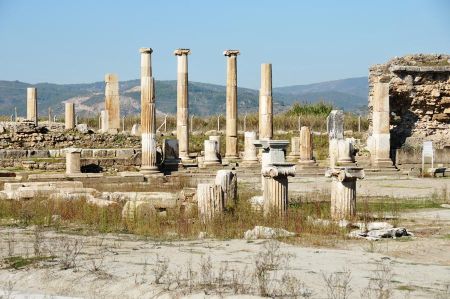Hellenistic Magnesia on the Meander
- Written by Portal Editor
Our journey takes us along the country road between Selcuk and Söke near Izmir, where the ruins of the old Hellenistic settlement town of Magnesia can be seen from afar.
In the vast plain of the Meander River, which is called Büyük Menderes in Turkish, the huge remains of the temple foundations and row of columns can still be seen as enormous piles of rubble. Remains of the former city wall are also still there.
The Kingdom of Ephesus succeeds in taking Magnesia
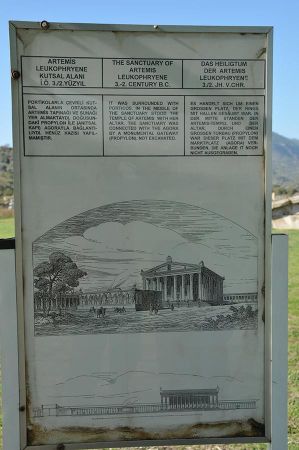 It is still not clear when exactly the city was founded, but legend has it that a group of Magnesians from Thessaly founded the first settlement here before the Trojan War.
It is still not clear when exactly the city was founded, but legend has it that a group of Magnesians from Thessaly founded the first settlement here before the Trojan War.
As early as 700 BC, Magnesia was attributed to the Lydian king Gyges, who ruled the region between 716 and 678 BC. After the conquest by the Cimmerians around 657 BC, the Kingdom of Ephesus managed to take Magnesia, but this was soon ended by the Persian Cyrus.
Under Alexander the Great, Magnesia was assigned to the Great Empire of Macedonia, but then after ongoing disputes between the Diadochi in 221 BC, Magnesia became Seleucid and experienced its heyday in the 2nd century together with the Kingdom of Pergamon until 196 BC, when a war with Miletus, which was ended with a peace treaty, led to renewed disputes and great destruction.
Temple of Artemis Leukophryne
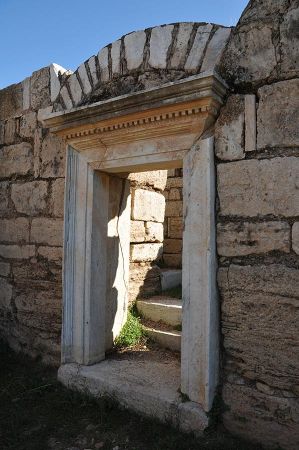 The ups and downs of the city's history are also described in detail by the historians Herodotus, Diodorus Siculus and Pausanias.
The ups and downs of the city's history are also described in detail by the historians Herodotus, Diodorus Siculus and Pausanias.
In 133 BC, Magnesia finally came into the possession of the Romans through inheritance. Since the inhabitants of Magnesia had also actively supported Rome in the fight against King Mithridates VI of Pontus, the Roman ruler Sula rewarded and accepted the inhabitants of the city with the status of a free city of Magnesia.
In its heyday, a temple of Artemis Leukophryne was built here, which Hermogenes created around 130 BC, as well as another temple of Zeus Sosipolis. Copies of a column bay of the Temple of Artemis and the pronaos of the Temple of Zeus have been rebuilt in the Pergamon Museum in Berlin.
Vitruvius's statements formed the basis for many researchers
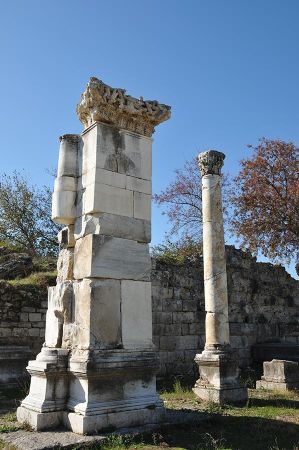 One of the most famous builders and architects of the time was Hermogenes, who spent parts of his life in Magnesia on the Maeander, in addition to his time in Priene. He is said to be the "inventor" of the "Pseudodipteros", a new type of temple that was first built in Magnesia and then served as a model for other cities.
One of the most famous builders and architects of the time was Hermogenes, who spent parts of his life in Magnesia on the Maeander, in addition to his time in Priene. He is said to be the "inventor" of the "Pseudodipteros", a new type of temple that was first built in Magnesia and then served as a model for other cities.
This is mentioned several times in volume three of the series of books by the historian Vitruvius. Vitruvius's statements also formed the basis for many researchers to search for the almost forgotten city.
As part of various excavation projects by French, English and German archaeologists, the location of the city was finally determined and the remains of the city were discovered.
Remains of the Temple of Artemis by the architect Hermogenes
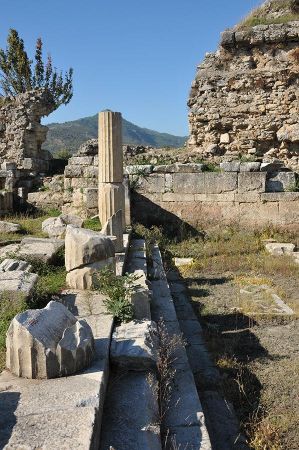 In the years 1891 to 1893, the Berlin Museum was responsible for excavations on site, which also uncovered the remains of the Temple of Artemis by the architect Hermogenes.
In the years 1891 to 1893, the Berlin Museum was responsible for excavations on site, which also uncovered the remains of the Temple of Artemis by the architect Hermogenes.
In 17 AD, Magnesia was badly damaged by a violent earthquake, but was quickly rebuilt by the Roman Emperor Tiberius due to its important functions for trade.
The first Christian communities were already established in Magnesia very early on; early records mention the year 114 AD, and these communities continued to grow in importance in the years to come, as evidenced by the large number of bishops who were sent to the councils.
The Aydınoğulları royal family takes control of the city
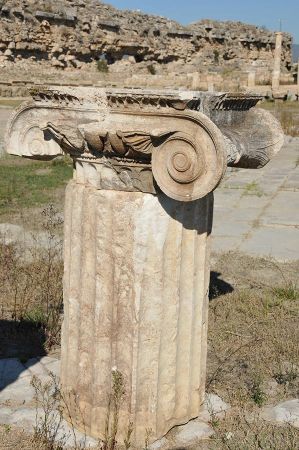 The city flourished again for the next 150 years, until the Goths invaded the country in 262 and destroyed a large part of the city through looting and conquest.
The city flourished again for the next 150 years, until the Goths invaded the country in 262 and destroyed a large part of the city through looting and conquest.
Like the cities of Miletus and Ephesus, Magnesia was never able to recover from this damage. In order to be able to resist the Persians and later the Seljuks, the city fortifications were improved again, but gradually the inhabitants left the city, mainly because there were severe floods in the Meander, epidemics and other diseases.
Around the year 1300, the Aydınoğulları royal family took control of the remains of the city, but were unable to stop the further decay.
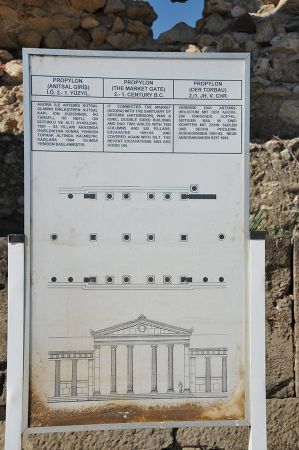 Unfortunately, at the end of the 19th century, under Ottoman rule, lime burning was widespread among the population, which required huge amounts of marble, which was of course easiest to obtain from the ruins of decayed cities. If you compare the remains of the ruins of Magnesia today with the pictures that the archaeologist Humann found in 1893, you can see the amount of material that was transported away and destroyed at the time.
Unfortunately, at the end of the 19th century, under Ottoman rule, lime burning was widespread among the population, which required huge amounts of marble, which was of course easiest to obtain from the ruins of decayed cities. If you compare the remains of the ruins of Magnesia today with the pictures that the archaeologist Humann found in 1893, you can see the amount of material that was transported away and destroyed at the time.
The remains of the Temple of Zeus also unfortunately fell victim to lime burning. In this respect, we should often be glad that certain pieces of the temple friezes and altar reliefs have found their way to the Museums of Berlin, London or Paris, because this was the only way they could be preserved.
Alluvial matter covers the ruins up to four meters deep
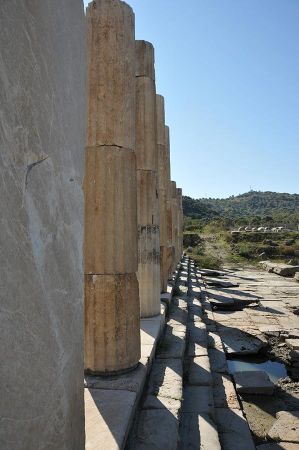 Thanks to the outstanding work, photographs and records of archaeologists such as Humann, many details were faithfully restored to the original when reconstructing the Pronaos facade of the Temple of Zeus in the Pergamon Museum in Berlin.
Thanks to the outstanding work, photographs and records of archaeologists such as Humann, many details were faithfully restored to the original when reconstructing the Pronaos facade of the Temple of Zeus in the Pergamon Museum in Berlin.
There were no further activities in Magnesia until 1984, despite much research into Hermogenes over the years, which meant that alluvial sediments of clay and other alluvial matter covered the ruins up to four meters deep.
Areas and buildings had to be uncovered again in painstaking work, which has since been carried out on behalf of the University of Ankara under the direction of Professor Orhan Bingöl.
Magnesia on the Meander: A Hidden Gem
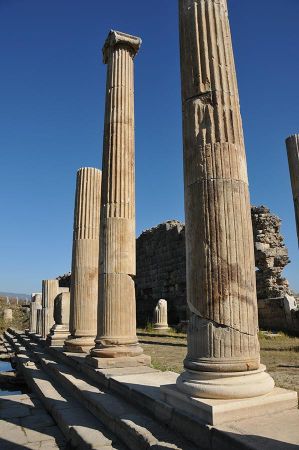 Nestled in the picturesque valleys of modern-day Turkey lies Magnesia on the Meander, an archaeological treasure often overshadowed by its more famous neighbors like Ephesus and Pergamon. This ancient city offers a unique blend of history, culture, and natural beauty, making it a true hidden gem for travelers and history enthusiasts alike.
Nestled in the picturesque valleys of modern-day Turkey lies Magnesia on the Meander, an archaeological treasure often overshadowed by its more famous neighbors like Ephesus and Pergamon. This ancient city offers a unique blend of history, culture, and natural beauty, making it a true hidden gem for travelers and history enthusiasts alike.
Historical Significance
Origins and Foundation
Magnesia on the Meander traces its roots back to the early Ionian period. Founded by settlers from Thessaly, it flourished as a key city in the ancient world due to its strategic location and fertile lands.
The Role of Magnesia in Ancient Times
The city played a pivotal role in trade and politics, serving as a hub for commerce and culture. Its position along the Meander River made it a crucial link in ancient trade routes.
Connection with Greek Mythology
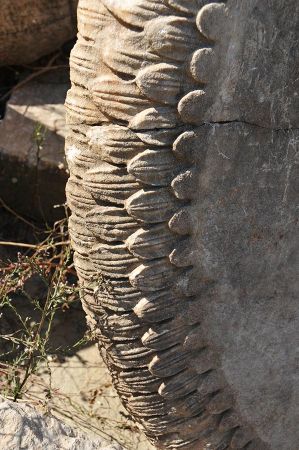 Legend has it that the city was named after the Magnetes, a Thessalian tribe. It is also linked to Artemis, the goddess of the hunt, who was deeply revered here.
Legend has it that the city was named after the Magnetes, a Thessalian tribe. It is also linked to Artemis, the goddess of the hunt, who was deeply revered here.
Location and Geography
Where is Magnesia on the Meander?
Located in the Aydın Province of Turkey, Magnesia sits near the modern town of Ortaklar. Its proximity to the Meander River provided both sustenance and strategic advantage.
The River Meander and its Importance
The river, known for its winding course, not only shaped the city’s geography but also inspired the term “meander” in English.
Architectural Marvels
The Temple of Artemis
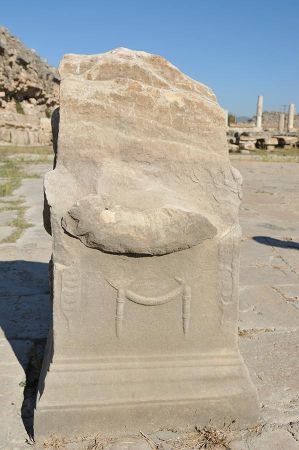 One of the largest temples dedicated to Artemis, this structure rivals even the famed Temple of Artemis at Ephesus in grandeur and significance.
One of the largest temples dedicated to Artemis, this structure rivals even the famed Temple of Artemis at Ephesus in grandeur and significance.
The Agora and Marketplace
The bustling heart of ancient Magnesia, the agora, was a center for trade and social gatherings, showcasing the city’s economic vitality.
Lesser-Known Structures
From the well-preserved theater to the ancient baths, Magnesia is a treasure trove of architectural wonders waiting to be explored.
Cultural Heritage
Festivals and Traditions in Ancient Magnesia
The city was renowned for its vibrant festivals, particularly those honoring Artemis. These events drew visitors from across the region.
Influence on Neighboring Civilizations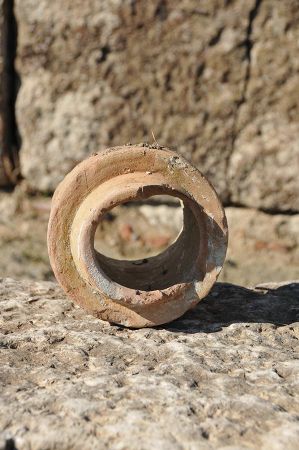 Magnesia’s culture and innovations left a lasting impact on neighboring cities, blending Ionian, Greek, and Anatolian traditions.
Magnesia’s culture and innovations left a lasting impact on neighboring cities, blending Ionian, Greek, and Anatolian traditions.
Rediscovery and Archaeological Efforts
How Magnesia was Rediscovered
The ruins of Magnesia were first unearthed in the 19th century, sparking interest among historians and archaeologists worldwide.
Current Archaeological Projects
Ongoing excavations continue to reveal new facets of the city, offering deeper insights into its rich history.
Visitor Experience
Exploring the Ruins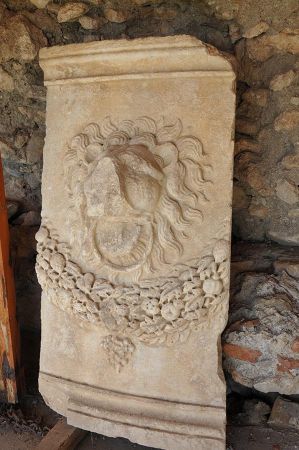 Wandering through Magnesia’s ruins is like stepping back in time. From the grand columns of the Temple of Artemis to the intricate mosaics, every corner tells a story.
Wandering through Magnesia’s ruins is like stepping back in time. From the grand columns of the Temple of Artemis to the intricate mosaics, every corner tells a story.
Tips for Travelers
- Wear comfortable shoes for walking on uneven terrain.
- Visit early in the morning to avoid crowds and heat.
- Bring a guidebook or hire a local guide for a more enriching experience.
The Hidden Beauty of Magnesia
Natural Surroundings The lush landscapes surrounding Magnesia add to its charm. The rolling hills and the serene Meander River create a perfect backdrop for exploration.
The lush landscapes surrounding Magnesia add to its charm. The rolling hills and the serene Meander River create a perfect backdrop for exploration.
Best Times to Visit
Spring and autumn are ideal for visiting, offering pleasant weather and vibrant natural scenery.
Conclusion
Magnesia on the Meander is more than just an archaeological site; it’s a journey into the heart of ancient history and culture. Its unspoiled beauty and rich heritage make it a must-visit destination for those seeking a unique and immersive experience.
Please also read:
Apollo Temple of Didyma and the right of asylum
Priene - Ionian city foundation near Miletus
-
 Magnesia at Mäander River
Magnesia at Mäander River
Magnesia at Mäander River
Magnesia at Mäander River
-
 Magnesia at Mäander River
Magnesia at Mäander River
Magnesia at Mäander River
Magnesia at Mäander River
-
 Magnesia at Mäander River
Magnesia at Mäander River
Magnesia at Mäander River
Magnesia at Mäander River
-
 Magnesia at Mäander River
Magnesia at Mäander River
Magnesia at Mäander River
Magnesia at Mäander River
-
 Magnesia at Mäander River
Magnesia at Mäander River
Magnesia at Mäander River
Magnesia at Mäander River
-
 Magnesia at Mäander River
Magnesia at Mäander River
Magnesia at Mäander River
Magnesia at Mäander River
-
 Magnesia at Mäander River
Magnesia at Mäander River
Magnesia at Mäander River
Magnesia at Mäander River
-
 Magnesia at Mäander River
Magnesia at Mäander River
Magnesia at Mäander River
Magnesia at Mäander River
-
 Magnesia at Mäander River
Magnesia at Mäander River
Magnesia at Mäander River
Magnesia at Mäander River
-
 Magnesia at Mäander River
Magnesia at Mäander River
Magnesia at Mäander River
Magnesia at Mäander River
-
 Magnesia at Mäander River
Magnesia at Mäander River
Magnesia at Mäander River
Magnesia at Mäander River
-
 Magnesia at Mäander River
Magnesia at Mäander River
Magnesia at Mäander River
Magnesia at Mäander River
-
 Magnesia at Mäander River
Magnesia at Mäander River
Magnesia at Mäander River
Magnesia at Mäander River
-
 Magnesia at Mäander River
Magnesia at Mäander River
Magnesia at Mäander River
Magnesia at Mäander River
-
 Magnesia at Mäander River
Magnesia at Mäander River
Magnesia at Mäander River
Magnesia at Mäander River
-
 Magnesia at Mäander River
Magnesia at Mäander River
Magnesia at Mäander River
Magnesia at Mäander River
-
 Magnesia at Mäander River
Magnesia at Mäander River
Magnesia at Mäander River
Magnesia at Mäander River
-
 Magnesia at Mäander River
Magnesia at Mäander River
Magnesia at Mäander River
Magnesia at Mäander River
-
 Magnesia at Mäander River
Magnesia at Mäander River
Magnesia at Mäander River
Magnesia at Mäander River
-
 Magnesia at Mäander River
Magnesia at Mäander River
Magnesia at Mäander River
Magnesia at Mäander River
-
 Magnesia at Mäander River
Magnesia at Mäander River
Magnesia at Mäander River
Magnesia at Mäander River
https://www.alaturka.info/en/turkey-country/aegean/6831-hellenistic-magnesia-on-the-meander#sigProId54133d2d63
